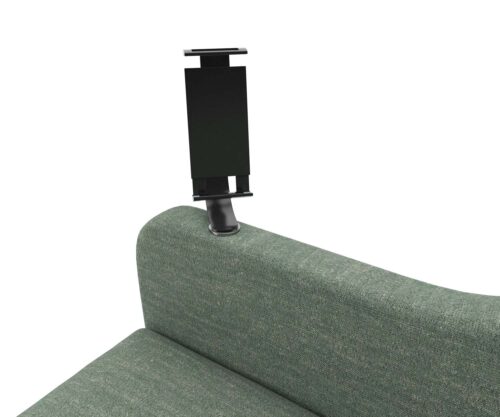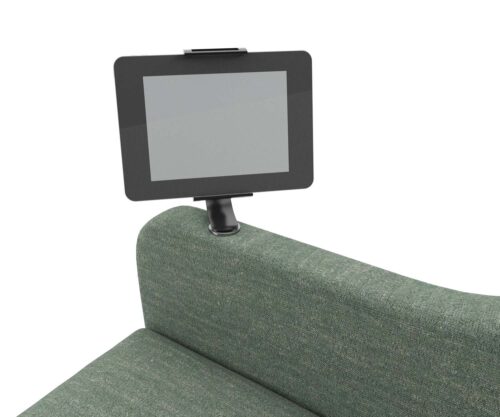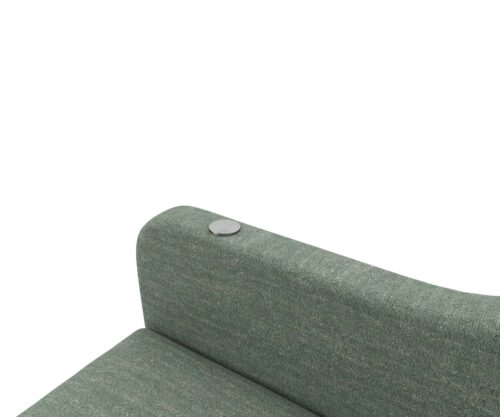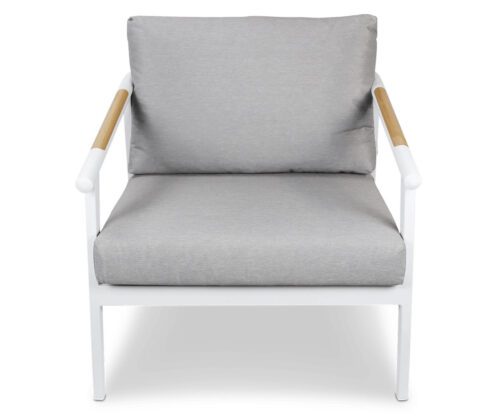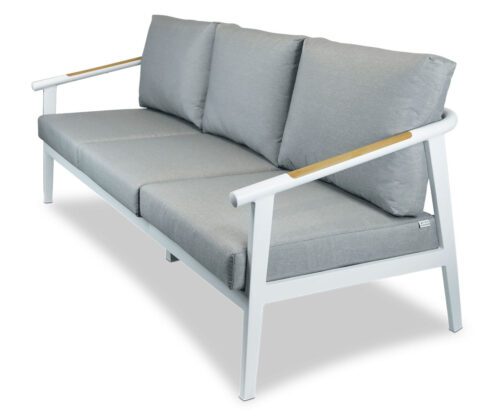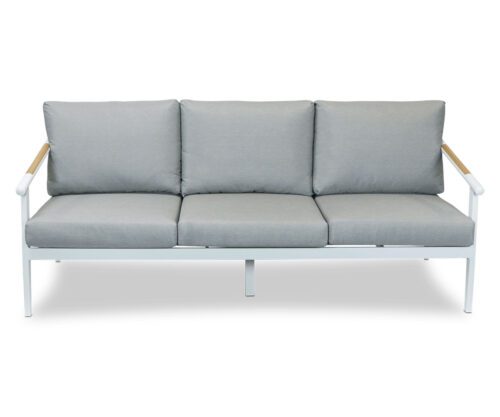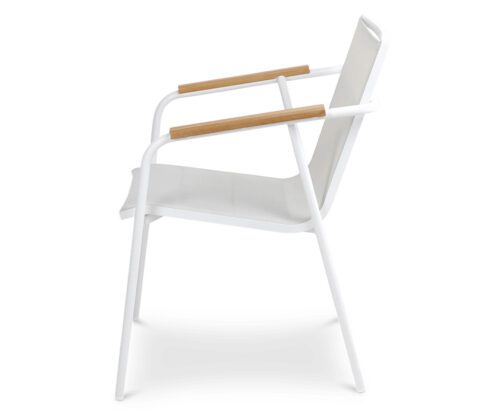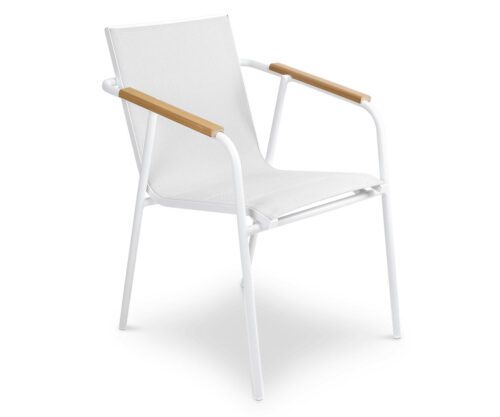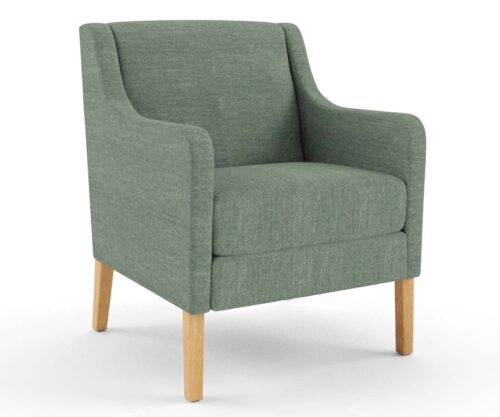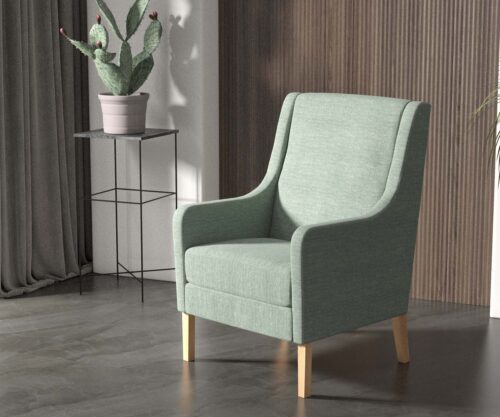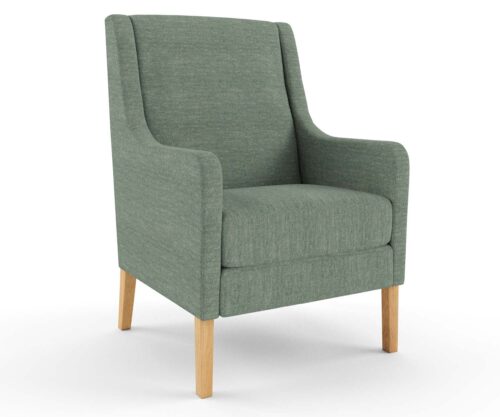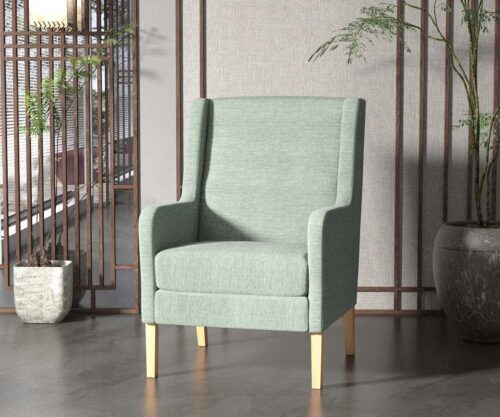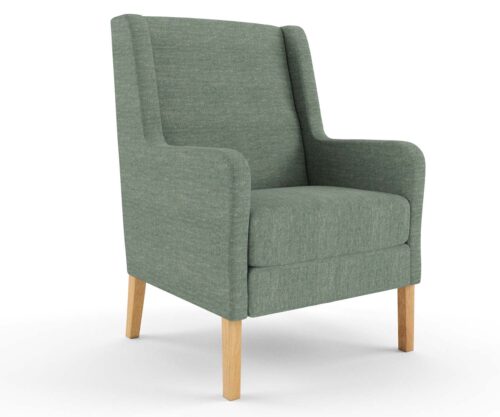Best Practices for Australian Universities in Student Furniture Procurement

In the dynamic landscape of university student accommodation, the role of procurement managers is pivotal. The task of furnishing living spaces for students requires a strategic and detail-oriented approach. In Australia, where universities strive for excellence in both education and student services, the procurement of furniture becomes a critical aspect of creating a conducive living and learning environment.
This article delves into the best practices that Australian university procurement managers can adopt to streamline the furniture procurement process.
1. Conduct a Comprehensive Needs Analysis
Before embarking on the procurement journey, conduct a thorough needs analysis. Understand the layout of student accommodations, the types of rooms, and any unique requirements for specialized spaces. Engage with stakeholders, including facilities managers and resident advisors, to gather insights that inform your procurement strategy.
- Engaging Stakeholders: Initiate discussions with facilities managers, resident advisors, and other relevant personnel to gather insights.
- Examining Layouts: Scrutinize accommodation layouts, considering room configurations and shared spaces.
- Identifying Specialized Areas: Recognize specialized spaces like study lounges, communal kitchens, and recreation rooms, tailoring furniture procurement accordingly.
- Considering Student Demographics: Account for the diverse needs and preferences of the student population.
- Analyzing Usage Patterns: Assess how students utilize their living spaces to inform functional furniture choices.
- Evaluating Comfort and Ergonomics: Ensure furniture promotes comfort and ergonomic well-being.
- Factoring in Aesthetics: Consider visual appeal in line with the university’s branding and design standards.
- Taking Future Growth into Account: Anticipate future growth and changes in student demographics for scalable and adaptable furniture choices.
- Reviewing Technological Requirements: Consider furniture that accommodates modern technological needs.
- Gathering Feedback: Actively seek feedback from current students and resident advisors to inform procurement decisions.
- Aligning with University Values: Ensure selected furniture aligns with the university’s values, including sustainability and diversity considerations.
By addressing these aspects, procurement managers can make informed decisions that meet the specific and evolving needs of the university and its diverse student body.
2. Establish Clear Furniture Specifications
Define precise specifications for the required furniture. This includes details on size, materials, design aesthetics, and any sustainability standards. Clarity in specifications is crucial for communicating expectations to potential vendors and ensuring that the procured furniture aligns with the university’s vision.
- Size and Dimensions: Clearly define the size and dimensions of each furniture piece, considering space constraints and optimal fit within designated areas.
- Materials and Construction: Specify preferred materials, emphasizing durability, maintenance, and safety. Consider sustainability, fire resistance, and overall construction quality.
- Design Aesthetics: Articulate design aesthetics aligned with the university’s image and branding, creating a cohesive and visually appealing living environment.
- Colour Schemes: Define colour schemes that complement the university’s design standards, considering the desired atmosphere for student accommodations.
- Functionality: Clearly state the intended functionality of each furniture item, ensuring it meets specific student needs and enhances their overall experience.
- Ergonomics: Prioritize ergonomic considerations for comfort, particularly for items like study chairs and desks.
- Customization Options: Specify any desired customization options available from vendors to tailor furniture to specific requirements or preferences.
- Compliance and Safety: Communicate compliance requirements and safety standards to ensure the well-being of occupants.
- Technological Integration: If needed, specify technology integration requirements, such as charging stations or cable management solutions.
- Sustainability Criteria: Clearly define sustainability criteria if it’s a priority, such as the use of recycled materials or adherence to eco-certifications.
- Budget Considerations: Ensure specifications align with the allocated budget, balancing quality, functionality, and aesthetics with financial constraints.
By focusing on these succinct specifications, procurement managers guide vendors to deliver furniture that not only meets basic requirements but also aligns with the university’s goals, enhancing the overall student living experience.
3. Budget Realism and Long-Term Value
While budget constraints are a reality, it is essential to strike a balance between cost and long-term value. Consider the lifecycle costs of furniture, including maintenance and replacement expenses. Allocating funds strategically can lead to better-quality, more durable furniture that pays off in the long run.
- Define Realistic Budgets: Begin by establishing realistic budgets for furniture procurement. This involves a thorough assessment of available funds, taking into account the overall financial constraints and priorities of the university.
- Consider Lifecycle Costs: Move beyond the initial acquisition cost and consider the lifecycle costs of the furniture. Higher upfront investments in durable and quality furniture can result in long-term savings by reducing maintenance and replacement expenses over the years.
- Evaluate Total Cost of Ownership (TCO): Assess the total cost of ownership by factoring in not only the purchase price but also maintenance, repairs, and potential replacement costs over the expected lifespan of the furniture. This comprehensive evaluation provides a clearer picture of the financial implications.
- Prioritize Quality and Durability: Acknowledge that quality and durability contribute significantly to long-term value. Investing in well-constructed, durable furniture ensures a reduced need for replacements and repairs, ultimately saving costs over the furniture’s lifecycle.
- Balancing Cost and Functionality: Strike a balance between cost considerations and the functional requirements of the furniture. While cost is a crucial factor, compromising too much on quality and functionality may lead to increased expenses in the long run.
- Explore Bulk Purchasing Opportunities: Leverage the potential for bulk purchasing discounts. Negotiate with vendors for cost-effective deals when procuring furniture in large quantities. This can help optimize the budget without sacrificing quality.
- Lifecycle Planning: Incorporate lifecycle planning into the budgeting process. Anticipate future needs and developments, and allocate funds accordingly. A forward-looking approach ensures that the furniture selected today will continue to meet evolving requirements.
- Consider Flexible Financing Options: Explore flexible financing options that align with the university’s financial strategy. This could include leasing arrangements or phased payments that distribute costs more evenly over time.
- Lifecycle Cost Analysis for Sustainability: For sustainable furniture options, conduct a lifecycle cost analysis that includes environmental considerations. While environmentally friendly options may have higher upfront costs, their long-term benefits in terms of reduced environmental impact can contribute to the university’s overall sustainability goals.
- Engage in Total Cost Discussions with Vendors: Engage in open discussions with vendors about the total cost of ownership. Seek transparency in pricing and inquire about maintenance requirements and expected lifespans to make informed decisions.
- Continuous Cost Monitoring: Implement a system for continuous cost monitoring throughout the furniture procurement process. Regularly reassess the budget against actual expenditures to identify any deviations and address them proactively.
- Educate Stakeholders on Budget Realism: Educate key stakeholders, including university administrators and decision-makers, on the importance of budget realism and the long-term value of investing in quality furniture. This collaborative understanding fosters support for strategic budget allocations.
By embracing budget realism and emphasizing long-term value, procurement managers can ensure that the university’s investment in student accommodation furniture is not only cost-effective but also contributes to creating a positive, sustainable, and enduring living environment for students.
4. Embrace Sustainability
Sustainability is an increasingly important consideration in furniture procurement. Look for vendors who align with the university’s commitment to eco-friendly practices. Sustainable materials, energy-efficient manufacturing processes, and recyclability should be integral to your decision-making process.
- Select Sustainable Materials: Prioritize furniture made from sustainable materials like FSC-certified wood or recycled metal.
- Energy-Efficient Manufacturing: Choose vendors with energy-efficient manufacturing processes, reducing environmental impact.
- Recyclability and Disposal: Opt for recyclable furniture components and consider end-of-life disposal implications.
- Certifications and Eco-labels: Look for products with recognized sustainability certifications like GREENGUARD.
- Reducing Carbon Footprint: Minimize carbon footprint by procuring locally and supporting regional economies.
- Longevity and Durability: Prioritize durable furniture to minimize waste and the need for frequent replacements.
- Waste Reduction Strategies: Seek vendors with waste reduction strategies, recycling production scraps and minimizing waste.
- Sustainable Packaging: Choose vendors using eco-friendly packaging materials to reduce environmental impact.
- Educational Initiatives: Implement educational programs to raise awareness about sustainable furniture choices.
- Life Cycle Assessment: Conduct life cycle assessments to evaluate overall environmental impact, considering raw materials, manufacturing, transportation, use, and disposal.
- Collaboration with Sustainable Suppliers: Collaborate with suppliers committed to sustainability, ensuring ethical manufacturing practices.
- Continuous Improvement: Encourage a commitment to continuous improvement in sustainability practices, staying updated on eco-friendly technologies and materials.
Embracing sustainability aligns with the values of modern universities, creating living spaces that are environmentally conscious and socially responsible.
5. Build Strong Vendor Relationships
Cultivate strong relationships with reputable furniture vendors. Consider factors such as reliability, product quality, adherence to delivery timelines, and after-sales support. A collaborative partnership with vendors ensures a smoother procurement process and reliable ongoing support.
- Selective Vendor Choice: Choose vendors aligned with the university’s values, sustainability goals, and quality standards.
- Clear Communication: Foster transparent communication to avoid misunderstandings and ensure alignment.
- Fair Pricing and Negotiation: Engage in fair negotiations, seeking pricing that fits the budget while maintaining quality standards.
- Long-Term Commitment: Aim for long-term partnerships to foster mutual understanding and commitment.
- Reliability and Consistency: Prioritize vendors known for reliability and consistent delivery within specified timelines.
- Quality Assurance: Establish clear quality assurance protocols for materials, construction, and finish.
- After-Sales Support: Evaluate vendors based on reliable after-sales support for warranty claims and repairs.
- Flexibility and Customization: Seek vendors offering flexibility and customization to meet unique university requirements.
- Sustainability Practices: Prioritize vendors with sustainable practices to align with the university’s sustainability goals.
- Conflict Resolution: Establish clear conflict resolution mechanisms for prompt issue resolution.
- Regular Performance Reviews: Conduct regular performance reviews to assess and provide constructive feedback.
- Collaborative Problem-Solving: Approach challenges collaboratively, working closely with vendors to address issues.
- Cultural Alignment: Consider cultural alignment when selecting vendors for a harmonious partnership.
These elements contribute to a positive and efficient partnership, ensuring the university obtains quality furniture that meets specifications, budget constraints, and sustainability goals.
6. Negotiate Comprehensive Terms
Negotiate not only on price but also on terms such as delivery schedules, payment structures, and warranty agreements. Seek opportunities for bulk discounts or special promotions to optimize your budget.
- Price and Discounts: Negotiate the price and explore quantity discounts or bulk purchasing advantages.
- Delivery Schedules: Define clear delivery schedules to align with project timelines and academic calendars.
- Payment Terms: Negotiate payment terms, considering phased payments tied to project milestones.
- Warranty Agreements: Establish clear warranty terms, including duration and provisions for repairs or replacements.
- Quality Assurance: Include quality assurance protocols to ensure compliance with specified standards.
- Penalties and Incentives: Discuss penalties for delays and incentives for exceeding expectations.
- Customization Options: Negotiate terms for customization, ensuring they align with original specifications.
- Return Policies: Clarify return policies for damaged or unsatisfactory items.
- Insurance and Liability: Determine responsibilities and insurance coverage for damage during transit or installation.
- Intellectual Property: Address intellectual property rights for customized or proprietary designs.
- Dispute Resolution: Establish clear dispute resolution mechanisms, such as arbitration or mediation.
- Ethical and Environmental Considerations: Include clauses for ethical business practices and environmental considerations.
- Communication Protocols: Define communication protocols for ongoing updates and changes to terms.
- Confidentiality Agreements: Negotiate confidentiality agreements for the protection of sensitive information.
Negotiating these terms ensures clear communication, transparency, and a shared commitment to the success of the furniture procurement project.
7. Prioritize Quality and Durability
Invest in high-quality, durable furniture that can withstand the rigors of student life. While initial costs may be higher, the long-term benefits of reduced maintenance and replacement expenses outweigh the upfront investment.
- Enhanced User Experience: Quality furniture enhances the overall satisfaction and well-being of students in accommodations.
- Longevity and Cost-Efficiency: High-quality, durable furniture proves cost-efficient over time, minimizing maintenance and replacement expenses.
- Resilience to Wear and Tear: Durable furniture withstands the wear and tear of daily student life, maintaining its aesthetic appeal and functionality.
- Minimized Disruptions: Durability minimizes disruptions caused by breakdowns or frequent repairs, ensuring a consistent living environment.
- Brand Image and Reputation: Quality furnishings positively contribute to the university’s brand image and reputation.
- Safety and Compliance: High-quality furniture meets safety standards, ensuring the well-being of students and compliance with regulations.
- Sustainable Practices: Durable furniture aligns with sustainability goals by reducing waste through fewer replacements.
- Adaptability to Evolving Needs: Quality furniture is often adaptable to changes in room configurations or technology integration.
- Positive Impact on Student Productivity: Comfortable and durable furniture positively impacts student productivity in study spaces.
- Ease of Maintenance: High-quality furniture is designed for easy maintenance, ensuring optimal condition with minimal effort.
- Consistent Aesthetics: Quality furniture contributes to consistent aesthetics, creating a cohesive and appealing living environment.
- Customer Satisfaction: Prioritizing quality drives customer satisfaction, fostering a positive community spirit within the university.
In summary, prioritizing quality and durability is an investment in the well-being, satisfaction, and overall positive experience of the student community.
8. Modular and Flexible Solutions
Opt for modular and flexible furniture options that can adapt to different room configurations. This versatility allows for easy adjustments to changing accommodation needs, providing a scalable and adaptable solution.
- Adaptability: Easily reconfigure furniture to adapt to changing needs, room layouts, and usage requirements.
- Space Optimization: Maximize efficient use of space with customizable solutions for diverse room sizes and configurations.
- Customization: Tailor furniture to specific functional requirements, accommodating various spaces within student accommodations.
- Easy Installation and Reconfiguration: Facilitate quick installation and reconfiguration during move-ins, renovations, or changing student demographics.
- Collaborative Spaces: Create collaborative spaces by allowing students to rearrange furniture for group activities and community building.
- Multi-Functional Designs: Incorporate multi-functional features for versatility, such as built-in storage or transforming furniture.
- Scalability: Easily scale furniture up or down to accommodate changes in university size or student accommodation needs.
- Durability and Interchangeability: Ensure durability and interchangeability of components, allowing for easy replacement or upgrades.
- Enhanced Student Experience: Offer students the ability to personalize living spaces, fostering a sense of ownership and comfort.
- Technology Integration: Seamlessly integrate technology with features like built-in charging stations and cable management.
- Cost-Efficiency: Achieve long-term cost-efficiency by mitigating the need for frequent replacements and upgrades.
- Aesthetic Variety: Provide aesthetic variety with a range of styles, colours, and configurations for visually appealing living spaces.
In summary, adopting modular and flexible solutions enhances adaptability, functionality, and the overall student experience in university accommodations.
9. Incorporate End-User Feedback
Include the perspectives of future occupants in the decision-making process. Gather feedback from students, resident advisors, and other stakeholders to understand their preferences, ensuring that the selected furniture aligns with the needs and expectations of the end users.
- Student-Centric Design: By engaging students in the furniture design process, universities are more likely to procure furniture that aligns with the lifestyle and preferences of the students.
- Comfort and Ergonomics: End-user feedback is invaluable in assessing the comfort and ergonomics of furniture. Students can provide insights into their daily routines, study habits, and relaxation preferences, guiding the selection of furniture that promotes well-being and supports various activities.
- Functional Requirements: Students are best positioned to articulate their functional requirements for furniture. Engaging with end-users allows procurement managers to understand specific needs such as storage space, desk configurations, and seating preferences, ensuring that the selected furniture meets practical demands.
- Aesthetic Preferences: Aesthetics play a significant role in student satisfaction. Gathering feedback on design preferences, colour schemes, and overall visual appeal ensures that the chosen furniture contributes to a cohesive and attractive living environment that resonates with the student community.
- Technological Integration: As technology is integral to student life, seeking feedback on technological needs and preferences is crucial. Incorporating charging stations, cable management solutions, and other tech-friendly features can be informed by direct input from end-users.
- Diversity of Living Spaces: Universities often have diverse living spaces, including shared dormitories, individual rooms, and common areas. End-user feedback aids in tailoring furniture solutions to the specific needs and dynamics of each type of living space, ensuring a versatile and inclusive approach.
- Feedback Collection Methods: Utilize various methods to collect feedback, such as surveys, focus groups, or direct interviews. A combination of these approaches allows for a comprehensive understanding of the diverse preferences and needs within the student population.
- Pilot Programs and Prototypes: Implement pilot programs or prototypes to test furniture options in real-life settings. This hands-on experience enables students to provide feedback based on actual usage, facilitating more informed procurement decisions.
- Iterative Design Process: Embrace an iterative design process based on ongoing feedback loops. This dynamic approach allows for adjustments and improvements to be made throughout the procurement process, ensuring that the final selection meets or exceeds student expectations.
- Community Engagement: Foster a sense of community engagement by involving students in the decision-making process. This collaborative approach not only garners valuable input but also creates a shared sense of ownership and pride in the living spaces.
- Post-Implementation Evaluation: Continue seeking feedback post-implementation to assess the effectiveness of the selected furniture. This ongoing evaluation ensures that any necessary adjustments can be made and informs future procurement decisions.
- Transparency and Communication: Maintain transparency and open communication channels throughout the feedback collection process. Keeping students informed about the procurement decisions and the incorporation of their input fosters trust and cooperation.
10. Create a Collaborative Procurement Team
Form a multidisciplinary procurement team that includes representatives from facilities management, interior design, and student affairs. Collaborative decision-making ensures that diverse perspectives are considered, leading to more informed and holistic procurement choices.
- Diverse Expertise: Include procurement specialists, interior designers, facility managers, budgeting experts, and student engagement representatives.
- Clear Roles: Define clear roles and responsibilities for efficient and accountable contributions.
- Cross-Functional Collaboration: Encourage cross-functional collaboration to break down silos and facilitate seamless information sharing.
- Project Management Skills: Appoint team members with strong project management skills for effective timeline management.
- Communication and Coordination: Emphasize effective communication and coordination through regular updates and collaborative platforms.
- Ethical Considerations: Uphold transparency, integrity, and ethical practices throughout the procurement process.
- Flexibility and Adaptability: Cultivate a culture of flexibility and adaptability to navigate changing circumstances.
By fostering collaboration among these diverse roles, universities ensure a well-rounded and efficient approach to furniture procurement, aligning choices with budget constraints, student needs, and the overall vision for quality student accommodations.
11. Efficient Logistics Planning
Develop a robust logistics plan for furniture delivery and installation. Coordinated efforts with vendors, transportation providers, and on-site personnel are essential to ensure a seamless process from procurement to implementation.
- Comprehensive Inventory: Develop a detailed inventory to identify quantities and specifications.
- Vendor Coordination: Communicate and coordinate with vendors for timely deliveries aligned with project milestones.
- Optimized Transportation: Optimize transportation logistics for cost-effectiveness and minimal environmental impact.
- Installation Planning: Meticulously plan furniture installation considering layout, functionality, and aesthetics.
- Timely Scheduling: Develop a precise schedule aligning with project timelines and academic calendars.
- Compliance with Campus Regulations: Adhere to campus regulations and guidelines to ensure safety and compliance.
- Waste Management: Implement waste management strategies, minimizing waste during installation.
- Coordination with Facility Management: Collaborate closely with facility management for insights into logistical constraints.
- Flexibility for Unforeseen Issues: Build flexibility into the plan to address unforeseen issues or delays.
- Quality Assurance Inspections: Conduct thorough inspections upon delivery to ensure quality and specifications.
- Effective Communication: Establish clear communication channels with stakeholders involved in logistics.
- Technology Integration: Leverage technology for real-time tracking and problem-solving during shipments.
- Post-Installation Support: Plan for post-installation support, including warranty claims or repairs.
- Training for Installation Teams: Provide training to installation teams to ensure efficient and accurate installations.
- Documentation and Record-Keeping: Maintain thorough documentation throughout the process for transparency and accountability.
Efficient logistics planning ensures a smooth and positive experience for students, optimizing the success of furniture procurement projects.
12. Stay Informed on Trends and Innovations
Regularly update your knowledge on furniture design trends and innovations. Staying informed about the latest developments in the industry enables you to make informed decisions that align with the preferences of the student population.
- Responsive to Preferences: Stay informed about evolving design trends to align furniture choices with student preferences.
- Enhanced Aesthetics: Ensure procured furniture contributes to a contemporary and aesthetically pleasing living environment.
- Incorporating Technology: Stay updated on technological innovations in furniture design, incorporating solutions like charging stations and smart features.
- Adapting to Educational Changes: Align furniture choices with changing educational models, supporting flexible and collaborative learning spaces.
- Sustainability Focus: Stay informed about eco-friendly materials and sustainable practices, aligning with the university’s sustainability goals.
- Wellness and Ergonomics: Consider the latest in ergonomic innovations to support student well-being and comfort.
- Customization and Flexibility: Stay aware of trends in customizable and flexible furniture solutions for diverse living spaces.
- Cultural and Diversity Considerations: Keep up with trends influenced by cultural shifts, ensuring inclusive and diverse furniture choices.
- Networking and Industry Insights: Engage with industry professionals, attend expos, and participate in design forums for firsthand insights.
- Industry Publications: Subscribe to design magazines and industry reports for ongoing information on trends and forecasts.
- Collaboration with Design Experts: Collaborate with interior designers or design experts for specialized knowledge in the procurement process.
- Continuous Learning: Encourage continuous learning within the team through workshops or online courses to stay updated on trends and innovations.
By staying informed, procurement managers contribute to creating modern and appealing student living spaces that align with evolving trends and enhance the overall university experience.
In the ever-evolving landscape of Australian university student accommodation, procurement managers play a crucial role in shaping the living experiences of students. By adopting these best practices, procurement managers can navigate the complexities of furniture procurement, ensuring that the chosen furniture enhances the overall student experience, aligns with sustainability goals, and contributes to the reputation of the university as a provider of exceptional living and learning environments.
Australian Made Student Accommodation Furniture
Our Australian-made student accommodation furniture is designed to meet the unique demands of student living while embodying the essence of durability, safety, and contemporary style.
More News
Best Practices for Australian Universities in Student Furniture Procurement

In the dynamic landscape of university student accommodation, the role of procurement managers is pivotal. The task of furnishing living spaces for students requires a strategic and detail-oriented approach. In Australia, where universities strive for excellence in both education and student services, the procurement of furniture becomes a critical aspect of creating a conducive living and learning environment.
This article delves into the best practices that Australian university procurement managers can adopt to streamline the furniture procurement process.
1. Conduct a Comprehensive Needs Analysis
Before embarking on the procurement journey, conduct a thorough needs analysis. Understand the layout of student accommodations, the types of rooms, and any unique requirements for specialized spaces. Engage with stakeholders, including facilities managers and resident advisors, to gather insights that inform your procurement strategy.
- Engaging Stakeholders: Initiate discussions with facilities managers, resident advisors, and other relevant personnel to gather insights.
- Examining Layouts: Scrutinize accommodation layouts, considering room configurations and shared spaces.
- Identifying Specialized Areas: Recognize specialized spaces like study lounges, communal kitchens, and recreation rooms, tailoring furniture procurement accordingly.
- Considering Student Demographics: Account for the diverse needs and preferences of the student population.
- Analyzing Usage Patterns: Assess how students utilize their living spaces to inform functional furniture choices.
- Evaluating Comfort and Ergonomics: Ensure furniture promotes comfort and ergonomic well-being.
- Factoring in Aesthetics: Consider visual appeal in line with the university’s branding and design standards.
- Taking Future Growth into Account: Anticipate future growth and changes in student demographics for scalable and adaptable furniture choices.
- Reviewing Technological Requirements: Consider furniture that accommodates modern technological needs.
- Gathering Feedback: Actively seek feedback from current students and resident advisors to inform procurement decisions.
- Aligning with University Values: Ensure selected furniture aligns with the university’s values, including sustainability and diversity considerations.
By addressing these aspects, procurement managers can make informed decisions that meet the specific and evolving needs of the university and its diverse student body.
2. Establish Clear Furniture Specifications
Define precise specifications for the required furniture. This includes details on size, materials, design aesthetics, and any sustainability standards. Clarity in specifications is crucial for communicating expectations to potential vendors and ensuring that the procured furniture aligns with the university’s vision.
- Size and Dimensions: Clearly define the size and dimensions of each furniture piece, considering space constraints and optimal fit within designated areas.
- Materials and Construction: Specify preferred materials, emphasizing durability, maintenance, and safety. Consider sustainability, fire resistance, and overall construction quality.
- Design Aesthetics: Articulate design aesthetics aligned with the university’s image and branding, creating a cohesive and visually appealing living environment.
- Colour Schemes: Define colour schemes that complement the university’s design standards, considering the desired atmosphere for student accommodations.
- Functionality: Clearly state the intended functionality of each furniture item, ensuring it meets specific student needs and enhances their overall experience.
- Ergonomics: Prioritize ergonomic considerations for comfort, particularly for items like study chairs and desks.
- Customization Options: Specify any desired customization options available from vendors to tailor furniture to specific requirements or preferences.
- Compliance and Safety: Communicate compliance requirements and safety standards to ensure the well-being of occupants.
- Technological Integration: If needed, specify technology integration requirements, such as charging stations or cable management solutions.
- Sustainability Criteria: Clearly define sustainability criteria if it’s a priority, such as the use of recycled materials or adherence to eco-certifications.
- Budget Considerations: Ensure specifications align with the allocated budget, balancing quality, functionality, and aesthetics with financial constraints.
By focusing on these succinct specifications, procurement managers guide vendors to deliver furniture that not only meets basic requirements but also aligns with the university’s goals, enhancing the overall student living experience.
3. Budget Realism and Long-Term Value
While budget constraints are a reality, it is essential to strike a balance between cost and long-term value. Consider the lifecycle costs of furniture, including maintenance and replacement expenses. Allocating funds strategically can lead to better-quality, more durable furniture that pays off in the long run.
- Define Realistic Budgets: Begin by establishing realistic budgets for furniture procurement. This involves a thorough assessment of available funds, taking into account the overall financial constraints and priorities of the university.
- Consider Lifecycle Costs: Move beyond the initial acquisition cost and consider the lifecycle costs of the furniture. Higher upfront investments in durable and quality furniture can result in long-term savings by reducing maintenance and replacement expenses over the years.
- Evaluate Total Cost of Ownership (TCO): Assess the total cost of ownership by factoring in not only the purchase price but also maintenance, repairs, and potential replacement costs over the expected lifespan of the furniture. This comprehensive evaluation provides a clearer picture of the financial implications.
- Prioritize Quality and Durability: Acknowledge that quality and durability contribute significantly to long-term value. Investing in well-constructed, durable furniture ensures a reduced need for replacements and repairs, ultimately saving costs over the furniture’s lifecycle.
- Balancing Cost and Functionality: Strike a balance between cost considerations and the functional requirements of the furniture. While cost is a crucial factor, compromising too much on quality and functionality may lead to increased expenses in the long run.
- Explore Bulk Purchasing Opportunities: Leverage the potential for bulk purchasing discounts. Negotiate with vendors for cost-effective deals when procuring furniture in large quantities. This can help optimize the budget without sacrificing quality.
- Lifecycle Planning: Incorporate lifecycle planning into the budgeting process. Anticipate future needs and developments, and allocate funds accordingly. A forward-looking approach ensures that the furniture selected today will continue to meet evolving requirements.
- Consider Flexible Financing Options: Explore flexible financing options that align with the university’s financial strategy. This could include leasing arrangements or phased payments that distribute costs more evenly over time.
- Lifecycle Cost Analysis for Sustainability: For sustainable furniture options, conduct a lifecycle cost analysis that includes environmental considerations. While environmentally friendly options may have higher upfront costs, their long-term benefits in terms of reduced environmental impact can contribute to the university’s overall sustainability goals.
- Engage in Total Cost Discussions with Vendors: Engage in open discussions with vendors about the total cost of ownership. Seek transparency in pricing and inquire about maintenance requirements and expected lifespans to make informed decisions.
- Continuous Cost Monitoring: Implement a system for continuous cost monitoring throughout the furniture procurement process. Regularly reassess the budget against actual expenditures to identify any deviations and address them proactively.
- Educate Stakeholders on Budget Realism: Educate key stakeholders, including university administrators and decision-makers, on the importance of budget realism and the long-term value of investing in quality furniture. This collaborative understanding fosters support for strategic budget allocations.
By embracing budget realism and emphasizing long-term value, procurement managers can ensure that the university’s investment in student accommodation furniture is not only cost-effective but also contributes to creating a positive, sustainable, and enduring living environment for students.
4. Embrace Sustainability
Sustainability is an increasingly important consideration in furniture procurement. Look for vendors who align with the university’s commitment to eco-friendly practices. Sustainable materials, energy-efficient manufacturing processes, and recyclability should be integral to your decision-making process.
- Select Sustainable Materials: Prioritize furniture made from sustainable materials like FSC-certified wood or recycled metal.
- Energy-Efficient Manufacturing: Choose vendors with energy-efficient manufacturing processes, reducing environmental impact.
- Recyclability and Disposal: Opt for recyclable furniture components and consider end-of-life disposal implications.
- Certifications and Eco-labels: Look for products with recognized sustainability certifications like GREENGUARD.
- Reducing Carbon Footprint: Minimize carbon footprint by procuring locally and supporting regional economies.
- Longevity and Durability: Prioritize durable furniture to minimize waste and the need for frequent replacements.
- Waste Reduction Strategies: Seek vendors with waste reduction strategies, recycling production scraps and minimizing waste.
- Sustainable Packaging: Choose vendors using eco-friendly packaging materials to reduce environmental impact.
- Educational Initiatives: Implement educational programs to raise awareness about sustainable furniture choices.
- Life Cycle Assessment: Conduct life cycle assessments to evaluate overall environmental impact, considering raw materials, manufacturing, transportation, use, and disposal.
- Collaboration with Sustainable Suppliers: Collaborate with suppliers committed to sustainability, ensuring ethical manufacturing practices.
- Continuous Improvement: Encourage a commitment to continuous improvement in sustainability practices, staying updated on eco-friendly technologies and materials.
Embracing sustainability aligns with the values of modern universities, creating living spaces that are environmentally conscious and socially responsible.
5. Build Strong Vendor Relationships
Cultivate strong relationships with reputable furniture vendors. Consider factors such as reliability, product quality, adherence to delivery timelines, and after-sales support. A collaborative partnership with vendors ensures a smoother procurement process and reliable ongoing support.
- Selective Vendor Choice: Choose vendors aligned with the university’s values, sustainability goals, and quality standards.
- Clear Communication: Foster transparent communication to avoid misunderstandings and ensure alignment.
- Fair Pricing and Negotiation: Engage in fair negotiations, seeking pricing that fits the budget while maintaining quality standards.
- Long-Term Commitment: Aim for long-term partnerships to foster mutual understanding and commitment.
- Reliability and Consistency: Prioritize vendors known for reliability and consistent delivery within specified timelines.
- Quality Assurance: Establish clear quality assurance protocols for materials, construction, and finish.
- After-Sales Support: Evaluate vendors based on reliable after-sales support for warranty claims and repairs.
- Flexibility and Customization: Seek vendors offering flexibility and customization to meet unique university requirements.
- Sustainability Practices: Prioritize vendors with sustainable practices to align with the university’s sustainability goals.
- Conflict Resolution: Establish clear conflict resolution mechanisms for prompt issue resolution.
- Regular Performance Reviews: Conduct regular performance reviews to assess and provide constructive feedback.
- Collaborative Problem-Solving: Approach challenges collaboratively, working closely with vendors to address issues.
- Cultural Alignment: Consider cultural alignment when selecting vendors for a harmonious partnership.
These elements contribute to a positive and efficient partnership, ensuring the university obtains quality furniture that meets specifications, budget constraints, and sustainability goals.
6. Negotiate Comprehensive Terms
Negotiate not only on price but also on terms such as delivery schedules, payment structures, and warranty agreements. Seek opportunities for bulk discounts or special promotions to optimize your budget.
- Price and Discounts: Negotiate the price and explore quantity discounts or bulk purchasing advantages.
- Delivery Schedules: Define clear delivery schedules to align with project timelines and academic calendars.
- Payment Terms: Negotiate payment terms, considering phased payments tied to project milestones.
- Warranty Agreements: Establish clear warranty terms, including duration and provisions for repairs or replacements.
- Quality Assurance: Include quality assurance protocols to ensure compliance with specified standards.
- Penalties and Incentives: Discuss penalties for delays and incentives for exceeding expectations.
- Customization Options: Negotiate terms for customization, ensuring they align with original specifications.
- Return Policies: Clarify return policies for damaged or unsatisfactory items.
- Insurance and Liability: Determine responsibilities and insurance coverage for damage during transit or installation.
- Intellectual Property: Address intellectual property rights for customized or proprietary designs.
- Dispute Resolution: Establish clear dispute resolution mechanisms, such as arbitration or mediation.
- Ethical and Environmental Considerations: Include clauses for ethical business practices and environmental considerations.
- Communication Protocols: Define communication protocols for ongoing updates and changes to terms.
- Confidentiality Agreements: Negotiate confidentiality agreements for the protection of sensitive information.
Negotiating these terms ensures clear communication, transparency, and a shared commitment to the success of the furniture procurement project.
7. Prioritize Quality and Durability
Invest in high-quality, durable furniture that can withstand the rigors of student life. While initial costs may be higher, the long-term benefits of reduced maintenance and replacement expenses outweigh the upfront investment.
- Enhanced User Experience: Quality furniture enhances the overall satisfaction and well-being of students in accommodations.
- Longevity and Cost-Efficiency: High-quality, durable furniture proves cost-efficient over time, minimizing maintenance and replacement expenses.
- Resilience to Wear and Tear: Durable furniture withstands the wear and tear of daily student life, maintaining its aesthetic appeal and functionality.
- Minimized Disruptions: Durability minimizes disruptions caused by breakdowns or frequent repairs, ensuring a consistent living environment.
- Brand Image and Reputation: Quality furnishings positively contribute to the university’s brand image and reputation.
- Safety and Compliance: High-quality furniture meets safety standards, ensuring the well-being of students and compliance with regulations.
- Sustainable Practices: Durable furniture aligns with sustainability goals by reducing waste through fewer replacements.
- Adaptability to Evolving Needs: Quality furniture is often adaptable to changes in room configurations or technology integration.
- Positive Impact on Student Productivity: Comfortable and durable furniture positively impacts student productivity in study spaces.
- Ease of Maintenance: High-quality furniture is designed for easy maintenance, ensuring optimal condition with minimal effort.
- Consistent Aesthetics: Quality furniture contributes to consistent aesthetics, creating a cohesive and appealing living environment.
- Customer Satisfaction: Prioritizing quality drives customer satisfaction, fostering a positive community spirit within the university.
In summary, prioritizing quality and durability is an investment in the well-being, satisfaction, and overall positive experience of the student community.
8. Modular and Flexible Solutions
Opt for modular and flexible furniture options that can adapt to different room configurations. This versatility allows for easy adjustments to changing accommodation needs, providing a scalable and adaptable solution.
- Adaptability: Easily reconfigure furniture to adapt to changing needs, room layouts, and usage requirements.
- Space Optimization: Maximize efficient use of space with customizable solutions for diverse room sizes and configurations.
- Customization: Tailor furniture to specific functional requirements, accommodating various spaces within student accommodations.
- Easy Installation and Reconfiguration: Facilitate quick installation and reconfiguration during move-ins, renovations, or changing student demographics.
- Collaborative Spaces: Create collaborative spaces by allowing students to rearrange furniture for group activities and community building.
- Multi-Functional Designs: Incorporate multi-functional features for versatility, such as built-in storage or transforming furniture.
- Scalability: Easily scale furniture up or down to accommodate changes in university size or student accommodation needs.
- Durability and Interchangeability: Ensure durability and interchangeability of components, allowing for easy replacement or upgrades.
- Enhanced Student Experience: Offer students the ability to personalize living spaces, fostering a sense of ownership and comfort.
- Technology Integration: Seamlessly integrate technology with features like built-in charging stations and cable management.
- Cost-Efficiency: Achieve long-term cost-efficiency by mitigating the need for frequent replacements and upgrades.
- Aesthetic Variety: Provide aesthetic variety with a range of styles, colours, and configurations for visually appealing living spaces.
In summary, adopting modular and flexible solutions enhances adaptability, functionality, and the overall student experience in university accommodations.
9. Incorporate End-User Feedback
Include the perspectives of future occupants in the decision-making process. Gather feedback from students, resident advisors, and other stakeholders to understand their preferences, ensuring that the selected furniture aligns with the needs and expectations of the end users.
- Student-Centric Design: By engaging students in the furniture design process, universities are more likely to procure furniture that aligns with the lifestyle and preferences of the students.
- Comfort and Ergonomics: End-user feedback is invaluable in assessing the comfort and ergonomics of furniture. Students can provide insights into their daily routines, study habits, and relaxation preferences, guiding the selection of furniture that promotes well-being and supports various activities.
- Functional Requirements: Students are best positioned to articulate their functional requirements for furniture. Engaging with end-users allows procurement managers to understand specific needs such as storage space, desk configurations, and seating preferences, ensuring that the selected furniture meets practical demands.
- Aesthetic Preferences: Aesthetics play a significant role in student satisfaction. Gathering feedback on design preferences, colour schemes, and overall visual appeal ensures that the chosen furniture contributes to a cohesive and attractive living environment that resonates with the student community.
- Technological Integration: As technology is integral to student life, seeking feedback on technological needs and preferences is crucial. Incorporating charging stations, cable management solutions, and other tech-friendly features can be informed by direct input from end-users.
- Diversity of Living Spaces: Universities often have diverse living spaces, including shared dormitories, individual rooms, and common areas. End-user feedback aids in tailoring furniture solutions to the specific needs and dynamics of each type of living space, ensuring a versatile and inclusive approach.
- Feedback Collection Methods: Utilize various methods to collect feedback, such as surveys, focus groups, or direct interviews. A combination of these approaches allows for a comprehensive understanding of the diverse preferences and needs within the student population.
- Pilot Programs and Prototypes: Implement pilot programs or prototypes to test furniture options in real-life settings. This hands-on experience enables students to provide feedback based on actual usage, facilitating more informed procurement decisions.
- Iterative Design Process: Embrace an iterative design process based on ongoing feedback loops. This dynamic approach allows for adjustments and improvements to be made throughout the procurement process, ensuring that the final selection meets or exceeds student expectations.
- Community Engagement: Foster a sense of community engagement by involving students in the decision-making process. This collaborative approach not only garners valuable input but also creates a shared sense of ownership and pride in the living spaces.
- Post-Implementation Evaluation: Continue seeking feedback post-implementation to assess the effectiveness of the selected furniture. This ongoing evaluation ensures that any necessary adjustments can be made and informs future procurement decisions.
- Transparency and Communication: Maintain transparency and open communication channels throughout the feedback collection process. Keeping students informed about the procurement decisions and the incorporation of their input fosters trust and cooperation.
10. Create a Collaborative Procurement Team
Form a multidisciplinary procurement team that includes representatives from facilities management, interior design, and student affairs. Collaborative decision-making ensures that diverse perspectives are considered, leading to more informed and holistic procurement choices.
- Diverse Expertise: Include procurement specialists, interior designers, facility managers, budgeting experts, and student engagement representatives.
- Clear Roles: Define clear roles and responsibilities for efficient and accountable contributions.
- Cross-Functional Collaboration: Encourage cross-functional collaboration to break down silos and facilitate seamless information sharing.
- Project Management Skills: Appoint team members with strong project management skills for effective timeline management.
- Communication and Coordination: Emphasize effective communication and coordination through regular updates and collaborative platforms.
- Ethical Considerations: Uphold transparency, integrity, and ethical practices throughout the procurement process.
- Flexibility and Adaptability: Cultivate a culture of flexibility and adaptability to navigate changing circumstances.
By fostering collaboration among these diverse roles, universities ensure a well-rounded and efficient approach to furniture procurement, aligning choices with budget constraints, student needs, and the overall vision for quality student accommodations.
11. Efficient Logistics Planning
Develop a robust logistics plan for furniture delivery and installation. Coordinated efforts with vendors, transportation providers, and on-site personnel are essential to ensure a seamless process from procurement to implementation.
- Comprehensive Inventory: Develop a detailed inventory to identify quantities and specifications.
- Vendor Coordination: Communicate and coordinate with vendors for timely deliveries aligned with project milestones.
- Optimized Transportation: Optimize transportation logistics for cost-effectiveness and minimal environmental impact.
- Installation Planning: Meticulously plan furniture installation considering layout, functionality, and aesthetics.
- Timely Scheduling: Develop a precise schedule aligning with project timelines and academic calendars.
- Compliance with Campus Regulations: Adhere to campus regulations and guidelines to ensure safety and compliance.
- Waste Management: Implement waste management strategies, minimizing waste during installation.
- Coordination with Facility Management: Collaborate closely with facility management for insights into logistical constraints.
- Flexibility for Unforeseen Issues: Build flexibility into the plan to address unforeseen issues or delays.
- Quality Assurance Inspections: Conduct thorough inspections upon delivery to ensure quality and specifications.
- Effective Communication: Establish clear communication channels with stakeholders involved in logistics.
- Technology Integration: Leverage technology for real-time tracking and problem-solving during shipments.
- Post-Installation Support: Plan for post-installation support, including warranty claims or repairs.
- Training for Installation Teams: Provide training to installation teams to ensure efficient and accurate installations.
- Documentation and Record-Keeping: Maintain thorough documentation throughout the process for transparency and accountability.
Efficient logistics planning ensures a smooth and positive experience for students, optimizing the success of furniture procurement projects.
12. Stay Informed on Trends and Innovations
Regularly update your knowledge on furniture design trends and innovations. Staying informed about the latest developments in the industry enables you to make informed decisions that align with the preferences of the student population.
- Responsive to Preferences: Stay informed about evolving design trends to align furniture choices with student preferences.
- Enhanced Aesthetics: Ensure procured furniture contributes to a contemporary and aesthetically pleasing living environment.
- Incorporating Technology: Stay updated on technological innovations in furniture design, incorporating solutions like charging stations and smart features.
- Adapting to Educational Changes: Align furniture choices with changing educational models, supporting flexible and collaborative learning spaces.
- Sustainability Focus: Stay informed about eco-friendly materials and sustainable practices, aligning with the university’s sustainability goals.
- Wellness and Ergonomics: Consider the latest in ergonomic innovations to support student well-being and comfort.
- Customization and Flexibility: Stay aware of trends in customizable and flexible furniture solutions for diverse living spaces.
- Cultural and Diversity Considerations: Keep up with trends influenced by cultural shifts, ensuring inclusive and diverse furniture choices.
- Networking and Industry Insights: Engage with industry professionals, attend expos, and participate in design forums for firsthand insights.
- Industry Publications: Subscribe to design magazines and industry reports for ongoing information on trends and forecasts.
- Collaboration with Design Experts: Collaborate with interior designers or design experts for specialized knowledge in the procurement process.
- Continuous Learning: Encourage continuous learning within the team through workshops or online courses to stay updated on trends and innovations.
By staying informed, procurement managers contribute to creating modern and appealing student living spaces that align with evolving trends and enhance the overall university experience.
In the ever-evolving landscape of Australian university student accommodation, procurement managers play a crucial role in shaping the living experiences of students. By adopting these best practices, procurement managers can navigate the complexities of furniture procurement, ensuring that the chosen furniture enhances the overall student experience, aligns with sustainability goals, and contributes to the reputation of the university as a provider of exceptional living and learning environments.
Australian Made Student Accommodation Furniture
Our Australian-made student accommodation furniture is designed to meet the unique demands of student living while embodying the essence of durability, safety, and contemporary style.
Commercial furniture by room
Based in Brisbane, we’re an Australian manufacturer of aged care furniture, retirement living furniture, hospital & healthcare furniture, hotel & accommodation furniture and student accommodation furniture. We also supply a range of commercial office furniture.
Discover the FHG Look Book: Your Source of Inspiration for Quality Australian-Made Commercial Furniture
- Quality Craftsmanship: See why we’ve been a trusted partner for over 25 years.
- Local Excellence: Learn how our Brisbane team ensures the highest standards.
- Inspiration and Ideas: Find innovative furniture solutions for any environment.
Don’t miss the opportunity to transform your commercial space with FHG’s expertly crafted furniture. Download the FHG Look Book today and start your journey towards exceptional design and quality.

